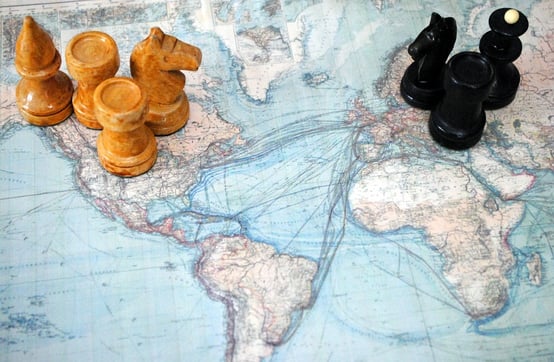One of the most significant questions organizations face in implementing a change is how many resources will we need to implement? And following this, where will we need them? The Who’s Who of a change implementation can be complicated. Who are the Sponsors and who are the Targets? Are the Sponsors Authorizing Sponsors or Reinforcing Sponsors? Are they all located in one department or are they scattered throughout the organization? 
Gaining clarity around roles and responsibilities is a basic but critical step for any implementation to be successful. This is far more robust than most stakeholder assessments!
The CAST of Characters
Don Harrison, the developer of the Accelerating Implementation Methodology (AIM) describes the four distinct roles within an organizational change as a CAST of characters. Champions, Agents, Sponsors and Targets each have a specific job to do and distinct accountabilities when implementing change projects:
- Champions believe in the change and attempt to obtain commitment and resources for it, but may not have the line authority to make it happen.
- Agents are assigned responsibility to implement change, and are evaluated on their ability to get the project implemented.
- Sponsors authorize, legitimize and demonstrate ownership for the change (Authorizing Sponsors). Or they must reinforce their personal commitment through their own visible, active behavior (Reinforcing Sponsors).
- Targets must change behavior, emotions, knowledge, perceptions, etc.
You can see that while there are four roles with distinct responsibilities, they obviously intersect and overlap quite often. In fact, during a major change such as transformation, there is always going to be an overlap of roles. So how do you identify who’s who?
Identifying Your CAST of Characters with a Key Role Map
In our change management training programs, we teach a disciplined process that produces a deliverable called a Key Role Map. The Key Role Map provides a graphic depiction of who’s who in your change, based on identifying all of the Target groups that are impacted by your change.
If you think you know who all those Target groups are already, we can almost guarantee that you are missing some groups unless you have completed this process. "Those impacted" include any resources you have working on the project, and all the support services that are involved in some way in your change. So, for example, if the IT organization and/or the Training organization are providing support services, these resources must be Sponsored. And they need to be included in your Key Role Map.
When you sit down to begin to create your document, we recommend following the following steps:
- Use an organization chart as a starting point of reference.
- List all of the Target groups impacted by the change.
- Rank each Target Group’s expected level of disruption as low, medium, or high.
- Start at the bottom of the organization and move up the organization level by level to mark where there are Sponsors, Agents and Champions of your change.
A few reminders:
- All resources used on the project must be Sponsored.
- An Authorizing Sponsor can't report to a Reinforcing Sponsor, or to another Authorizing Sponsor.
- Ultimately, every Reinforcing Sponsor must report either directly or through the chain of command of Reinforcing Sponsors to an Authorizing Sponsor.
- Every Sponsor (Authorizing and Reinforcing) on the map must be considered a "Target" first. Their ability to serve as a Sponsor is only possible when that individual has moved past being a Target themselves! This is a critical point because many of your Sponsors will still be in Target mode.
The Importance of Having a Battlefield Map
The Key Role Map helps give a visual depiction of the precise organizational location of Authorizing Sponsors, Reinforcing Sponsors, Change Agents, and Targets of the change. One of the biggest "aha's" after participants in our AIM Accreditation sessions put together their key role map is that there are often far more Sponsors that need to be attended to than what they originally thought!
While it may take several weeks to develop a good key role map, it is an invaluable tool. The document provides the project team and Sponsors with significant insights into what level of resources will be needed to develop a cascading network of Reinforcing Sponsors at the local implementation level of the organization, and how will they need to be deployed. In our own change management consulting, we have had key role maps that take up the walls of an entire room for a complex, enterprise-wide change.
But remember, the Key Role Map is a dynamic document. It's constantly changing because the organization and project constantly change. So it needs to maintained and updated through the entire project lifecycle. Once you have mastered Key Role Mapping, you will see that the battlefield map it provides is arguably the most important deliverable for any Change Agent or project team.


